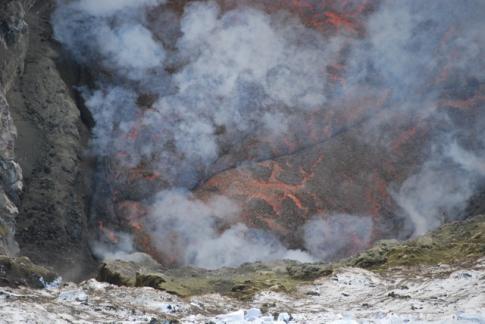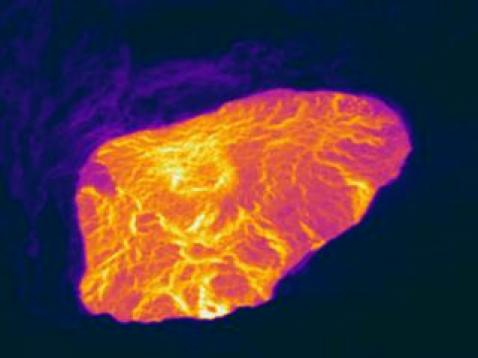Mt. Erebus is unique in being the world's southern most active volcano. What also makes this volcano special is the long lived lava lake that has been in the crater ever since people have been looking there, and probably much longer. The lava lake in Mt. Erebus is similar to only two other volcanoes on earth, Nyiragongo, in the Congo and Erta'Ale, in Ethiopia. But the formation of the crystals on Erebus is similar to only a couple other volcanoes, including Mt. Kenya. And to make it even more confusing, Erebus has a composition of lava that is similar to one of the deadliest volcanoes on earth, Mt. Vesuvius! You can begin to imagine why Mt. Erebus is such an interesting place to study.

The lava lake sits about 200 meters below the crater rim. One of the most interesting things about the lake is that it has convection currents that bring up fresh hot magma all the time. The temperature of the magma does reach temperatures of 1000 degrees C. There is heat being lost through several methods of heat transfer. The lake has convection currents that carry the heat to the surface. That heat then radiates into the air. The magma also conducts heat to the rock that it comes in to contact with.

This thermal image of the lake shows the different temperatures of the lava at the surface. The darker spots are cooler and beginning to crust over, even as the material is still in the lake. In fact, the cooler areas are already 300 to 400 degrees cooler than the brighter hotter spots.


Comments